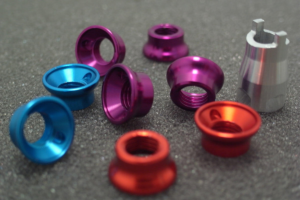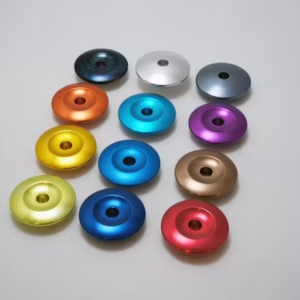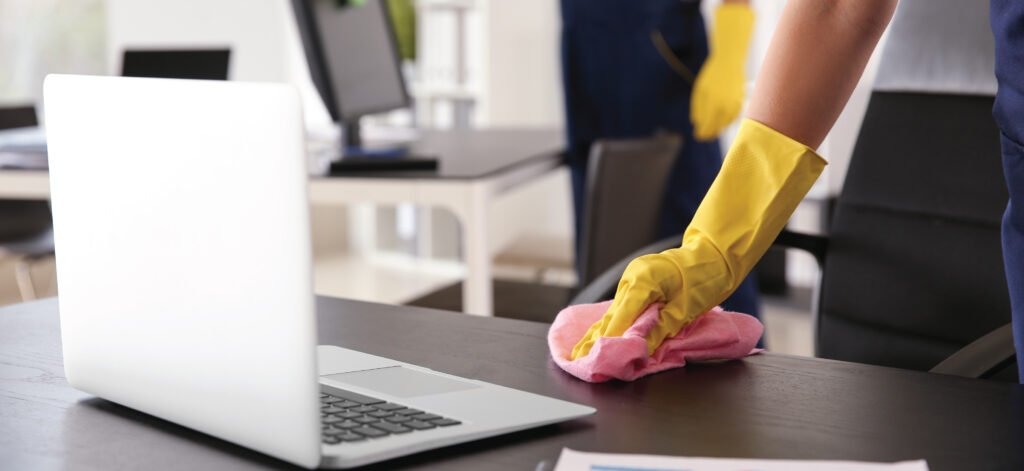Anodizing is a widely used process for improving the durability, corrosion resistance, and appearance of metal surfaces, particularly aluminum. By creating a protective oxide layer, anodizing extends metal parts’ lifespan while offering aesthetic customization options. However, over time, anodized surfaces may wear, fade, or become damaged, leading to questions about whether applying a new anodized layer over the existing one is possible. This is an important consideration for industries and individuals looking to refurbish anodized parts rather than completely replacing them.
This article will explore re-anodizing old anodized layers, and the necessary surface preparation steps to ensure optimal results.
What Is Anodizing?

Anodizing is an electrochemical process that transforms the surface of metals, most commonly aluminum, into a durable, corrosion-resistant oxide layer. This process strengthens the metal and improves its resistance to environmental factors such as moisture and chemicals. During anodizing, the metal is immersed in an acid electrolyte bath and subjected to an electrical current, which causes oxygen ions to combine with the metal at the surface, creating a controlled oxide layer.
The anodized layer is highly porous, allowing further treatments such as dyeing for aesthetic purposes or sealing to enhance corrosion resistance. Metal anodizing is often preferred in aerospace, automotive, and architecture industries, where strength and appearance are critical. The process is also environmentally friendly, does not involve harmful chemicals, and results in a non-toxic finish.
Why Anodizing Over Old Anodizing?

Here are the possible reasons for anodizing over old anodized part:
Restoring Protective Properties
Over time, the protective qualities of an anodized layer can degrade due to wear, exposure to harsh environments, or chemical damage. Re-anodizing over old anodized surfaces can restore the metal’s corrosion resistance, hardness, and durability. This is especially important for industries such as aerospace or marine applications, where maintaining metal integrity against corrosion is critical for safety and performance. Re-anodizing renews the oxide layer, ensuring the metal resists environmental stressors like moisture, salt, and UV exposure.
Revitalizing Aesthetic Appearance
One primary reason for anodizing is to enhance the visual appeal of metal parts. However, UV exposure, pollutants, and abrasion can cause anodized finishes to fade or discolor over time. Re-anodizing helps restore the original vibrancy of dyed or natural finishes. This particularly benefits architectural and consumer goods, where aesthetics are as important as function. Instead of replacing an entire part, re-anodizing offers a cost-effective way to refresh the look of a product, bringing back its sleek and polished appearance.
Cost-Effectiveness and Sustainability
Re-anodizing is often a more economical and environmentally friendly option than replacing parts entirely. Instead of manufacturing new components, re-anodizing allows industries to refurbish existing parts, reducing both material waste and production costs. This practice is especially valuable in sectors where large or custom components are used, such as automotive, aerospace, and architectural applications. Refurbishing existing parts through re-anodizing also aligns with sustainability efforts by extending the usable life of materials and minimizing resource consumption.
Repairing Localized Damage
In many cases, only portions of the anodized surface may be damaged, while the rest of the metal remains in good condition. Re-anodizing allows manufacturers to address localized issues such as scratches, corrosion spots, or wear patterns without replacing or discarding the entire part. After the old anodizing is stripped or treated, a new layer can be applied to restore uniformity in appearance and protection. This selective repair can save time, money, and resources while ensuring the part retains its full functional capabilities.
Enhancing Performance for Critical Applications
Maintaining optimal surface properties is crucial for components used in high-performance environments, such as aerospace, automotive, or industrial machinery. Anodized layers offer resistance to wear, abrasion, and heat, which can diminish over time. Re-anodizing these parts can restore their original performance characteristics, ensuring they meet critical applications’ rigorous demands. By refurbishing parts rather than replacing them, companies can minimize downtime and production delays while ensuring the components are reliable and safe for continued use.
Can You Anodize Over Old Anodizng (How to)

Yes, it is possible to anodize over old anodizing, but the process involves specific steps to ensure proper adhesion and optimal results. Applying a new anodized layer over an old one with preparation will lead to uneven coating, poor durability, and consistent appearance. Here’s how the process generally works:
Evaluate the Condition of the Old Anodized Layer
Before proceeding, it is essential to assess the condition of the existing anodized surface. If the original anodizing is lightly worn or faded but still intact, it may be possible to re-anodize directly after some surface preparation. However, if significant damage, such as deep scratches, corrosion, or heavy discoloration, it may be necessary to strip the old anodizing completely before re-anodizing. The evaluation will determine whether the surface can be restored or needs a full redo.
Stripping the Old Anodized Layer
In most cases, the old anodized layer must be stripped to prepare the surface for a fresh anodizing process. This is typically done using a chemical stripping solution to remove the oxide layer without damaging the underlying metal. The stripping process ensures that the surface is free from contaminants, uneven thickness, or any remnants of the old coating that could hinder the adhesion of the new anodized layer.
Common stripping agents include caustic soda (sodium hydroxide) or proprietary anodize stripping solutions. This step must be cautiously performed to avoid over-etching or pitting the metal surface.
Thorough Surface Cleaning and Preparation
Once the old anodizing is stripped, the metal surface must be cleaned thoroughly to remove any remaining contaminants, oils, or dirt that could interfere with the re-anodizing process. The surface is usually cleaned with a mild detergent or alkaline cleaner, followed by rinsing to ensure no residue is left behind. For more stubborn residues, acid etching might be necessary to prepare the surface further and create the ideal conditions for anodizing.
After cleaning, mechanical finishing methods like sanding or polishing may be employed to smooth out imperfections and ensure uniformity of the surface. This step helps achieve a more consistent final anodized layer.
Re-Anodizing the Metal
With the surface properly prepared, the metal is ready for re-anodizing. The part is immersed in an electrolyte bath, typically sulfuric acid, and subjected to an electrical current, just as in the original anodizing process. The new anodized layer forms as the electrical current causes the anodized aluminum surface to react with the oxygen in the electrolyte, creating a fresh oxide coating.
The thickness of the new layer can be controlled based on the duration and current applied during the anodizing process. Once anodizing is complete, the part can be dyed if color is desired, followed by sealing to lock in the protective properties and enhance the durability of the surface.
Sealing the New Anodized Layer
After re-anodizing, the final step is sealing the anodized layer. This involves immersing the newly anodized part in hot water or a sealing solution, which closes the microscopic pores in the oxide layer, enhancing corrosion resistance and preventing contamination. Sealing also helps lock in any dyes applied during the process, ensuring the color remains vibrant and long-lasting.
Conclusion
Anodizing over old anodized surfaces can be a highly effective way to restore the protective properties and aesthetic appeal of aluminum parts without total replacement. While it is possible to re-anodize, proper surface preparation, including stripping the old anodized layer and thoroughly cleaning the surface, is essential for achieving optimal results. This process allows industries and individuals to extend the lifespan of their anodized components, ensuring continued durability, corrosion resistance, and vibrant appearance.
However, it’s essential to recognize the potential challenges, such as ensuring uniformity and dealing with surface damage. By following the proper steps and considering the condition of the original anodized layer, re-anodizing can offer a cost-effective and sustainable solution for renewing metal parts across various industries.





